Painting the Town Red: What Colors Tell Us About Underground Utilities
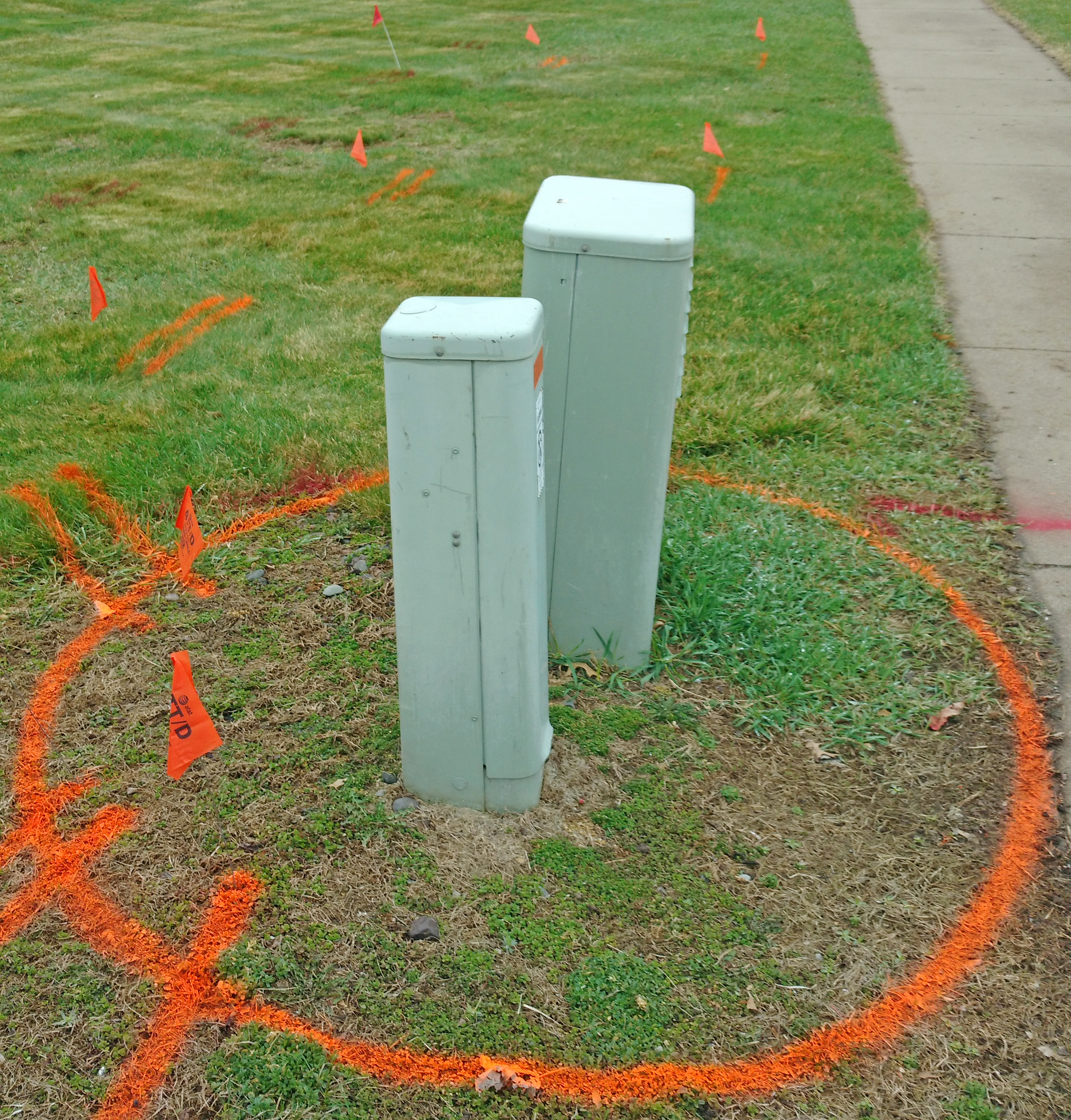 With spring setting in and the construction season beginning in earnest, you may notice some “graffiti” marking up a sidewalk, intersection, or lawn in your neighborhood.
With spring setting in and the construction season beginning in earnest, you may notice some “graffiti” marking up a sidewalk, intersection, or lawn in your neighborhood.
The varied paint colors (often accompanied by bouquets of small flags) may just seem like clutter as you move past. But for those who will be digging there soon, the information contained in those lines, shapes, and numbers is very important.
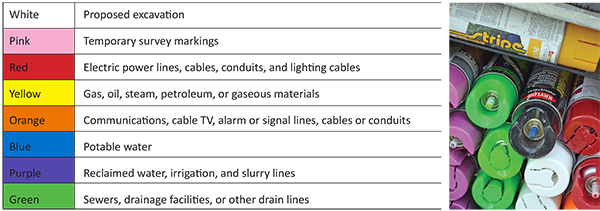
The colors represent what is known as the American Public Works Association Uniform Color Code, and each of the eight colors has its own significance. For example, you’ll likely see lots of white, which documents the proposed excavation limits for new construction. Another popular color is orange, which shows the location of the busy array of underground communications wires.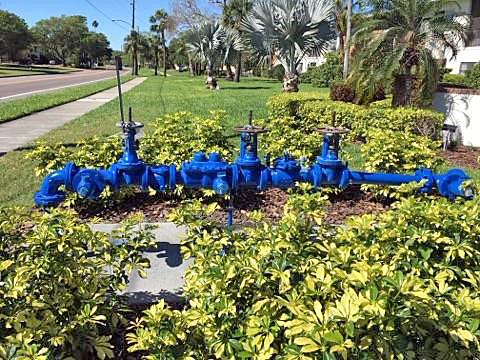
In places like Florida, you’ll notice areas of purple, pointing out reclaimed water mains and pipes used for irrigation, and blue for potable water lines.
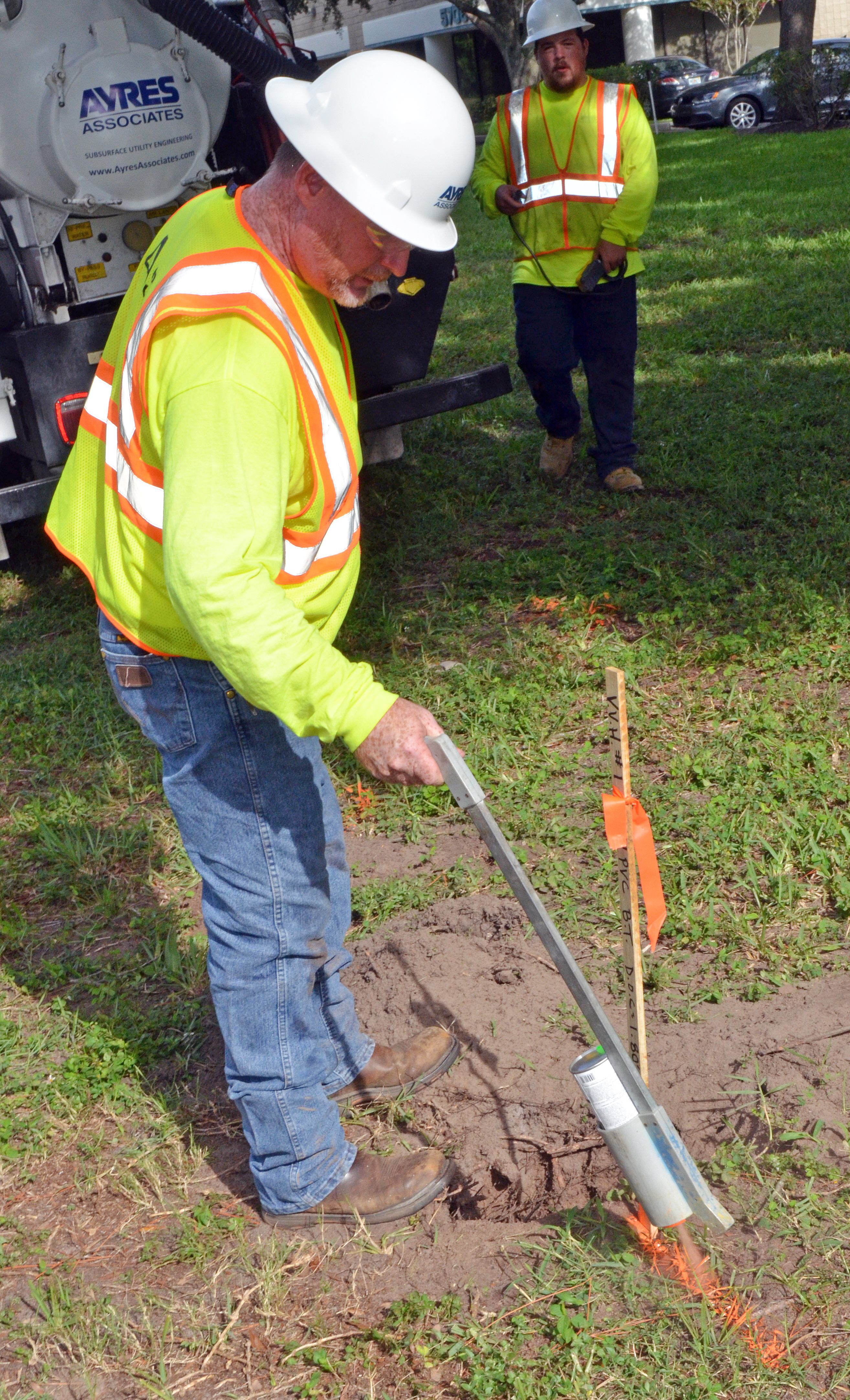 Ayres Associates’ subsurface utility engineering and survey crews are intimately familiar with the APWA color code. Our technicians and surveyors use the colors daily while marking underground utilities for our clients using electromagnetic locating, ground penetrating radar, and vacuum excavation.
Ayres Associates’ subsurface utility engineering and survey crews are intimately familiar with the APWA color code. Our technicians and surveyors use the colors daily while marking underground utilities for our clients using electromagnetic locating, ground penetrating radar, and vacuum excavation.
The location points are picked up by surveyors using GPS; they then place the exact points on maps for our clients to use during construction. The process keeps construction workers safe by knowing exactly what’s buried beneath them before the first shovel hits the ground.
Next time you call in a dig ticket to your local utility for a backyard project, your yard likely will be marked by a smattering of these colors. And the colors will tell you what’s buried underneath.
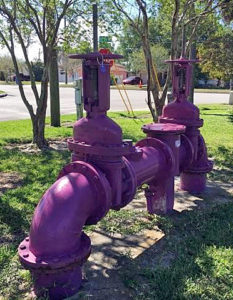 You can learn more about subsurface utility engineering in the latest issue of our TRENDS magazine. Click here to read the digital version, which also features stories about a courthouse remodeling project in Jackson County, Wisconsin, and the use of unmanned aircraft systems (drones) in various projects.
You can learn more about subsurface utility engineering in the latest issue of our TRENDS magazine. Click here to read the digital version, which also features stories about a courthouse remodeling project in Jackson County, Wisconsin, and the use of unmanned aircraft systems (drones) in various projects.
For detailed information about subsurface utility engineering, visit the SUE service page here.

Post a comment: